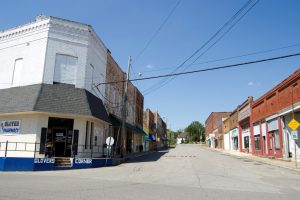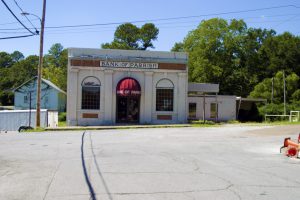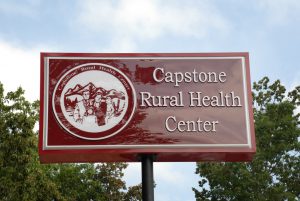By Michael Washington
Photos by Zach Riggins
“A Win-Win for All Partners Involved”
Those are the words of Dr. Karl Hamner, director of scholarly affairs at The University of Alabama’s Capstone College of Nursing, when remarking on the progress of improving health care and access in Walker County, Alabama.
History tells us that a community’s gift can often become its curse. Such is the case with Walker County. The remoteness and unspoiled natural beauty of the region makes an autumn drive along the yet-to-be-completed Corridor X a lesson in conservation. But remoteness means inaccessibility, a damper to industry and a curse to preventative and emergency medical care.

But the residents and partners of the region are rising to that challenge in the same way they triumphed in making the region a coal and mining capital for the state. They are working together and working with the resources they have.
Walker County, located approximately 22 miles northwest of Birmingham, has always had a slight transportation problem. In fact, settlement in the early 19thCentury was slow because of the area’s isolation and terrain.
Today, small towns like Carbon Hill, Cordova, Dora, Nauvoo and Oakman are separated from healthcare providers in Parrish and Jasper by miles of sparsely populated, mostly rural land.
It should come as no surprise that this lack of access has contributed to the county’s ranking, by the Robert Wood Johnson Foundation, as 65th of 67 Alabama counties in terms of overall health. In order to provide more readily available access for residents, something had to be done.
What began as a conversation among colleagues in 2007 has become a major community-based partnership and needs assessment between Capstone College of Nursing faculty and Walker County health providers.
WATCH 2010 (Walker Area Transformational Coalition for Health) has evolved from a transactional relationship aimed at studying the health care needs of visitors to local clinics; to a coalition of 13 agencies including UA, Bevill State Community College, Samford University, Baptist Health Systems and the Alabama Department of Public Health. The coalition envisions improving and sustaining wellness programs through additional funding provided by federal research grants.

A 2008 proposal to the Department of Health and Human Services garnered a Rural Network Development Grant for the following year. The coalition hit the ground running by funding a needs assessment, a health fair and conference on health care—all of which served to improve collaboration in identifying the problems that lead to health care disparities in rural areas.
Paramount to the coalition’s efforts, a needs assessment was led by Dr. Ann Graves, professor in the Capstone College of Nursing, to determine the challenges of improving health outcomes for Walker county’s 70,000 residents. In 2009, the assessment, WARN (Walker Area Resources and Needs), began.
The term “needs assessment” is counterintuitive to healthcare professionals who deal with the issues of inadequate health. The coalition knew there was a problem, but they had to specify exactly what barriers prevented Walker county residents from having medical care at least on par with the rest of the state.
“One of the biggest challenges was the lack of information sharing between the health care providers in the area,” says Graves. “But the other major health issues we found are common to rural areas with lower household incomes—lack of insurance, smoking, transportation and obesity.”
Hamner echoes Graves’ analysis and adds that the coalition itself has already made a major impact with its existence. One instance of that coordination helped reduce a backlog of patients at the Hope Clinic in Jasper by treating patients at the Capstone Rural Health Center in Parrish.

“Combining our experiences and resources increases economies of scale and allows us to coordinate to provide more cost-effective ways to ensure better health outcomes,” says Hamner.
WATCH has plans to continue working to improve access to health care in Walker County. The team is exploring telemedicine to combat transportation limitations for rural residents. The ability to reduce or eliminate travel for a doctor’s visit with audiovisual media has the potential to, literally, expand the reach of doctors and nurses into any community.
The coalition hopes to serve as a model for other rural communities facing the same disparities. Hamner specifically mentions the Alabama’s Black Belt community, which faces the same challenges and health risk factors.
“With this project, we see elements of good citizenship and open dialogue for the residents, more cost-effective programs for providers, and the opportunity for research for the academic partners such as UA,” says Hamner.
A win-win for all partners involved.